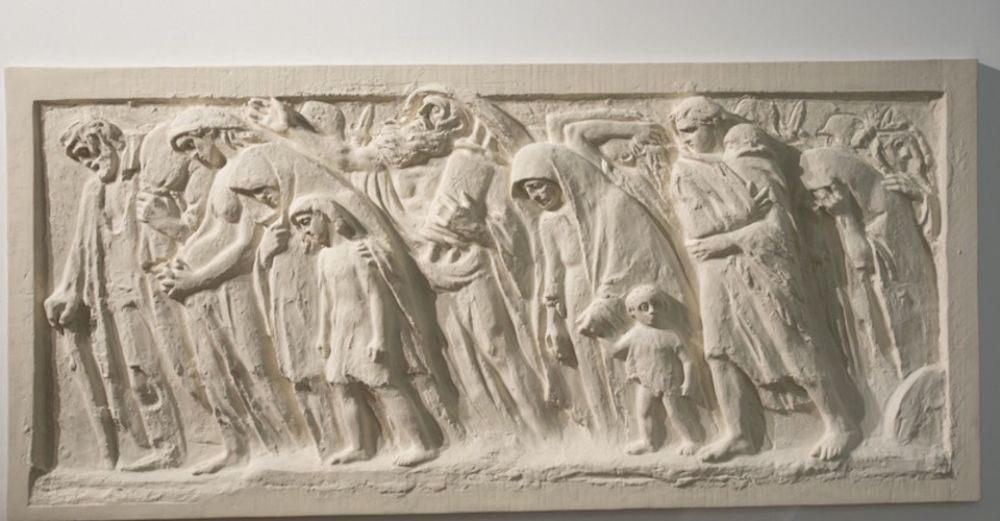- News
- Events
- Oneg Shabbat
- Collections
- Research
- Exhibitions
- Education
- Publishing Department
- Genealogy
- About the Institute
- Bookstore


For many years, Rappaport’s plaster project lay in storage unavailable to the general public. Formerly, with many defects, covered in a layer of paint which had been applied to hide the flaws of previous conservation works, today it reveals its splendours and true beauty. Thoroughly renovated project opens the exhibition ‘Polish art and the Holocaust’ in the Jewish Historical Institute.
The plaster project by Natan Rappaport takes a special place on the exhibition. Placed in the first room, mounted onto the wall, it is considered to be an element opening the whole exhibition. The relief emerges from the snow-white background. It presents people of various age, bound together with the ties of blood, religion, nationality and, finally, the shared experience of the horrible end of people going to the slaughter.
The figures from the relief, reminiscent of the ancient Israelites, are dressed in clothes which seem as if taken from the Biblical times. The only elements which stand out and put the scene in a modern context are mercenaries’ helmets — a reference to the Holocaust. They are in the shape of German helmets from the period of the Second World War. Rappaport unambiguously identifies the perpetrators.
The main character of the composition of the relief is the old man with bushy beard, resembling Moses. He is carrying what is the most precious for the people of Israel — Torah. He is the leader of his people, holding the biggest sanctity and foundation of Jewish fate. Among the rushed to death is also a child, who holds tightly onto its parent’s hand.
The relief resembles its ancient predecessors which were placed on the altars or facades of the temples. It is reminiscent of, for example, the famous Roman Ara Pacis, the altar to Peace, built in the times of Octavianus Augustus, which is covered in scenes depicting, among others, the imperial family and courtiers going to give sacrifice to the gods. Among them is also a child, embracing its mother’s leg. The similarity between the element of the altar and the Natan Rappaport’s project is not accidental.
Rappaport shares the truth about the Holocaust concisely through the pathos of the form inspired by the ancient sculpture. The relief from the JHI’s collection is one of the first works which were created after the Holocaust.
Gipsowy projekt Natana Rappaporta z 1947 r. do brązowego reliefu „Pochód śmierci” na pomniku Bohaterów Getta.
The work before restoration
The work after restoration